HAI PHONG In recent years, people in Bat Trang commune, An Lao district have switched to growing dragon fruit using organic processes and have initially increased economic efficiency.
Profit 15 million VND/sao/year
Bat Trang Commune (An Lao District) has been planned by the Hai Phong City People's Committee to become a fruit tree production area from 2023 with an area of over 50 hectares in Truc Trang village. This is also the largest dragon fruit growing area in Hai Phong today. Due to the suitable soil, the dragon fruit here produces large, sweet fruits, with quality not inferior to other famous growing areas.
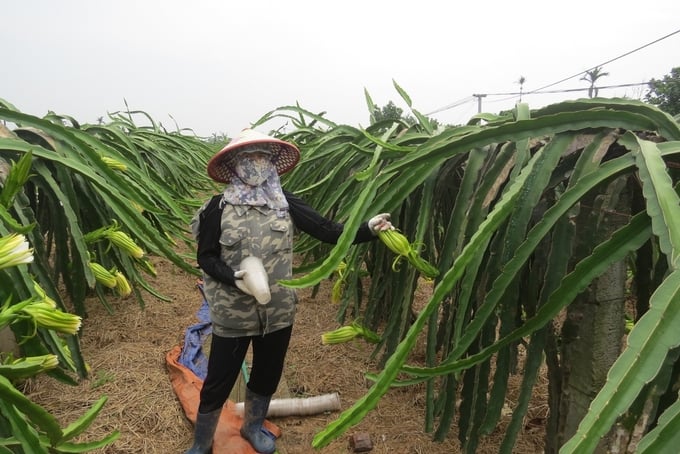
Ms. Pham Thi Hoa (Truc Trang village) is taking care of her family's 1-acre dragon fruit garden. Photo: Dinh Muoi.
The family of Ms. Pham Thi Hoa in Truc Trang village is one of the earliest households to grow dragon fruit in Bat Trang commune with a total area of nearly 1 hectare. She has researched and pioneered the application of new technology to grow white-fleshed dragon fruit, using organic fertilizers for organic production.
Ms. Hoa said that in the past, her family's dragon fruit garden was planted on cement pillars like many people do, so the efficiency and productivity were not high. Later, when the experience of growing and caring for it in an organic way was popularized, her family replanted the whole garden and built a trellis for the dragon fruit.
Regarding fertilizer, Ms. Hoa used to buy organic fertilizer for fertilizing, but recently she learned how to compost organic fertilizer from fish and soybeans for use. During the cultivation process, after a year of harvesting, old dragon fruit branches will be pruned, ground, mixed and composted into organic microbial fertilizer to fertilize the dragon fruit the following year.
With proper investment, on average, each year Ms. Hoa's dragon fruit garden yields 5-6 harvests, with a total output of more than 1,000 tons of fruit, with a selling price of 12,000 - 30,000 VND/kg (depending on the time), after deducting expenses, her family earns about 150 million VND/year.
“Growing dragon fruit on trellises helps increase productivity and reduce pests and diseases. The family prioritizes the use of organic fertilizers and absolutely does not use chemical pesticides to produce high-quality, safe dragon fruit,” Ms. Hoa said.
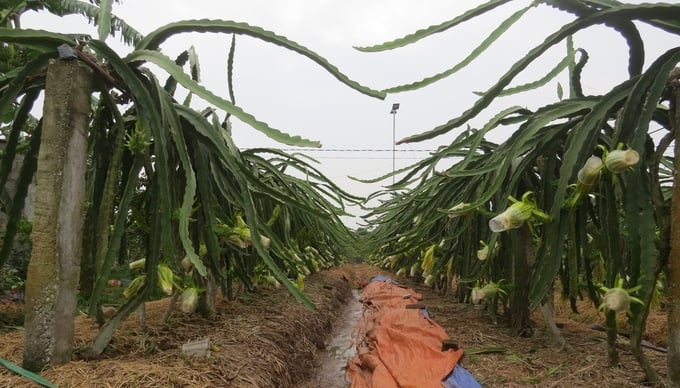
The white-fleshed dragon fruit garden is cultivated according to organic processes by Ms. Hoa's family. Photo: Dinh Muoi.
Like Ms. Hoa's family, most households in Truc Trang village now grow dragon fruit organically. Caring for the plants with organic fertilizers helps improve the soil's looseness and fertility, the dragon fruit roots are always strong, the plant's resistance is good, the fruit is abundant, the quality is delicious, sweet, and the skin is thin and tight.
Mr. Vu Van Thuy, a member of Truc Trang Organic Agriculture Cooperative, shared that his family is currently piloting an organic dragon fruit growing model with 1,500 trees. During the cultivation process, he only uses organic fertilizer made from cow manure treated with microorganisms combined with fermented soybeans. This type of fertilizer is rich in macro, medium and micronutrients, has a high level of safety, provides abundant nutrition, helps improve poor soil, and produces very sweet fruit.
Mr. Thuy also ferments soybeans to water directly at the base of the plants, watering once every 15 days using a drip irrigation system. This system will save more water and fertilizer than conventional spraying but still ensure the necessary amount of water and nutrients for the plants, avoiding loss and waste.
On average, each dragon fruit tree is fertilized with 30kg of organic fertilizer each year, divided into two times (when the tree flowers and after harvest). “These are the stages when the tree needs the most nutrients, so if provided with adequate nutrients, the tree will be healthy and produce delicious, sweet fruit.
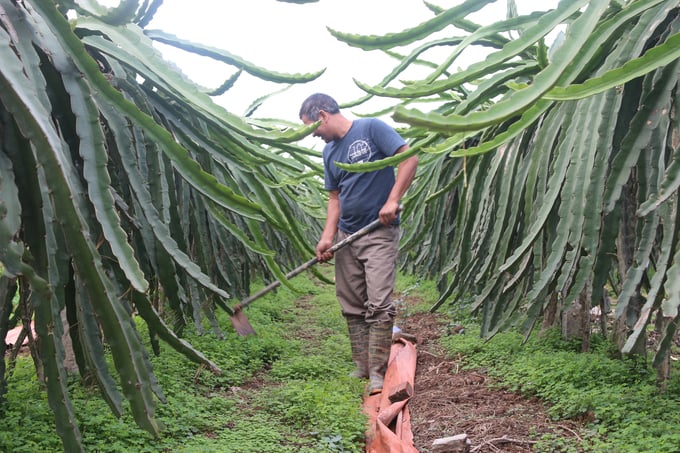
For a long time, people in Bat Trang commune have stopped using herbicides for their dragon fruit gardens. Photo: Dinh Muoi.
“Although people here have only started growing dragon fruit for about 10 years, this crop has helped improve their lives and many households have become rich. My family is growing more than 1 hectare of white-fleshed dragon fruit, with an annual output of more than 1 ton, and after deducting expenses, the profit is hundreds of millions of dong,” said Mr. Thuy.
Currently, Truc Trang village has 300 households growing dragon fruit, with an average yield of 12 - 15 tons/ha/year. With a selling price ranging from 25 - 30 thousand VND/kg, on average, farmers can earn 15 million VND/year from 1 sao (360m2). Thanks to dragon fruit, people have a stable income, and many households have become rich.
Shift to organic production
Mr. Hoang Van Vien, Party Cell Secretary and Deputy Director of Truc Trang Organic Agriculture Cooperative, said that dragon fruit cultivation started here in 2015, initially only a few households tried planting.
By 2018, seeing that dragon fruit grown locally had high economic efficiency, people in Truc Trang village encouraged each other to convert rice and lychee growing areas to white-fleshed dragon fruit. Up to now, the whole village has up to 300 households growing dragon fruit with an area of 40 hectares.
Using organic fertilizers to grow and care for dragon fruit helps the tree grow and develop better, the fruit quality is more even and sweeter, while ensuring safety for consumers, protecting the environment and the natural ecosystem. At the same time, it helps the tree increase its resistance, reduce pests and molds, the tree bears fruit regularly, has a fairly high yield, the fruit is shiny and has a sweet taste.
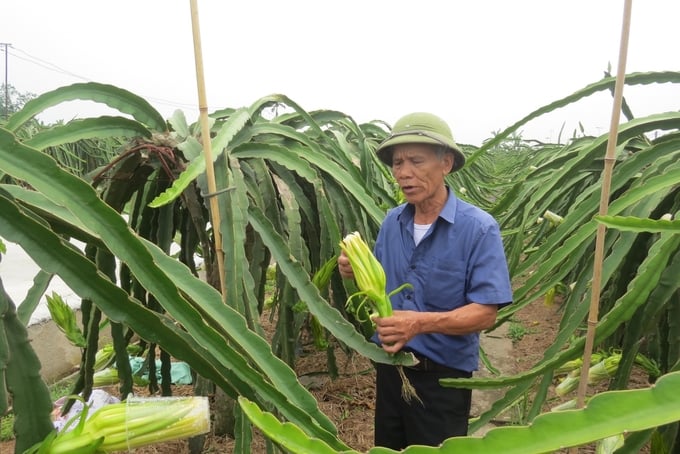
Mr. Hoang Van Vien, Party Cell Secretary and Deputy Director of Truc Trang Organic Agriculture Cooperative, shared about the economic benefits of white-fleshed dragon fruit. Photo: Dinh Muoi.
To expand the development of dragon fruit, the cooperative always actively seeks units to purchase and consume products for farmers. The cooperative also popularizes to its members the application of the lamp method to process off-season dragon fruit.
“Dragon fruit is a perennial plant, with a lifespan of several decades. After nearly 2 years of planting and care, the dragon fruit trees produce their first fruits. From the third year onwards, dragon fruit yields more and begins to stabilize in yield,” Mr. Vien shared.
According to the Hai Phong Agricultural Extension Center, Bat Trang commune is favored by nature with 3 sides bordering the river, and is the upstream of Lach Tray and Da Do rivers, so the water source is abundant, the land is fertile, suitable for forming a key production area for fruit trees.
The entire Bat Trang commune currently has over 200 hectares of fruit trees of all kinds (of which 80 hectares are dragon fruit, 80 hectares are lychee, the rest are other crops). With over 1,000 households growing dragon fruit, this crop brings in a profit of over 400 million VND/ha/year.
The organic dragon fruit growing area here is being paid attention to by Hai Phong City, oriented for development to be planned into a specialized area, allowing people to switch from rice cultivation to other crops, including dragon fruit.
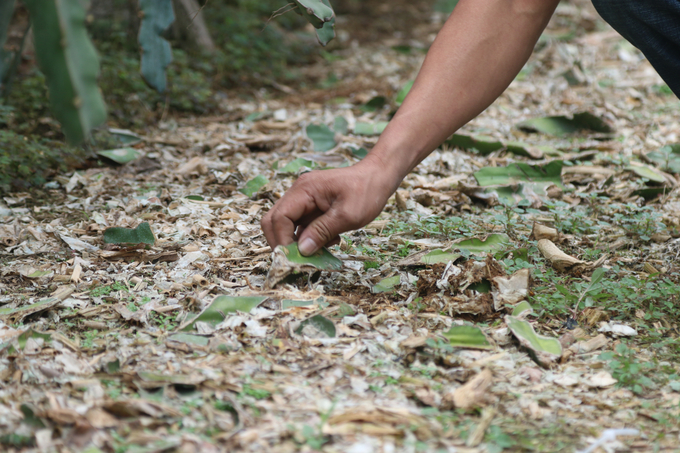
People have learned how to make organic fertilizer from discarded dragon fruit stems. Photo: Dinh Muoi.
Since 2021, the Hai Phong Agricultural Extension Center has supported a number of households to switch to growing dragon fruit according to VietGAP and organic standards. During the production process, farmers do not use chemical fertilizers, pesticides, etc., only using organic microbial fertilizers, mineral fertilizers and biological products to fertilize dragon fruit.
Dragon fruit is an easy-to-grow plant, requires little care, and is suitable for the soil in Bat Trang commune. The tree bears fruit from April to October of the lunar calendar. In addition to the advantage of low initial investment costs, the profit is also very high, with an average investment of only about 5 million VND per sao, and 1 crop yields 7-11 harvests.
When people switched to organic production, without using chemicals, dragon fruit trees still produced fruit regularly, with high productivity, shiny fruit, and a sweet taste. In particular, after harvest, the trees were not damaged, the branches still grew well, and there was no fear of affecting the productivity of the following crops.
“The initial effectiveness of organic dragon fruit production is relatively clear compared to traditional methods. In addition, dragon fruit products produced according to organic processes have a more stable output than those of conventional farming households, with prices about 10% higher than the market price,” affirmed Engineer Do Thi Nhung, an officer at the An Lao Agricultural Extension Station.
Source: https://nongsanviet.nongnghiep.vn/thanh-long-qua-to-ngot-mat-nho-san-xuat-huong-huu-co-d387751.html





![[Photo] Overcoming all difficulties, speeding up construction progress of Hoa Binh Hydropower Plant Expansion Project](https://vstatic.vietnam.vn/vietnam/resource/IMAGE/2025/4/12/bff04b551e98484c84d74c8faa3526e0)

![[Photo] Closing of the 11th Conference of the 13th Central Committee of the Communist Party of Vietnam](https://vstatic.vietnam.vn/vietnam/resource/IMAGE/2025/4/12/114b57fe6e9b4814a5ddfacf6dfe5b7f)
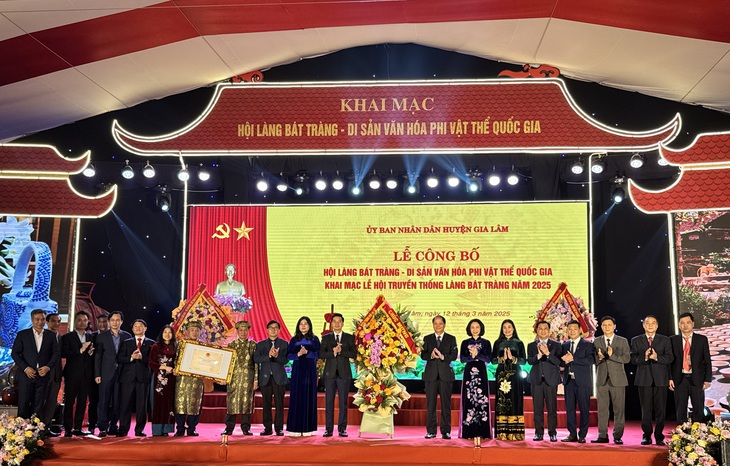

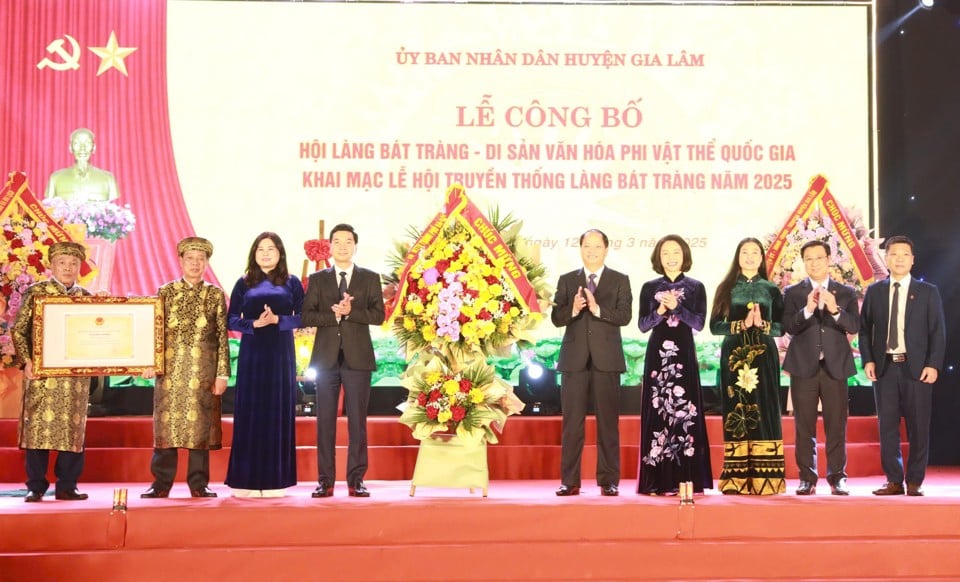

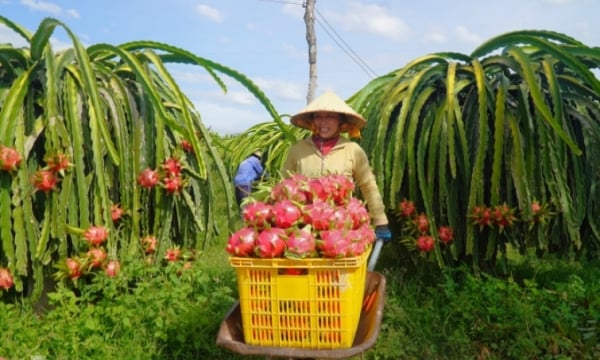




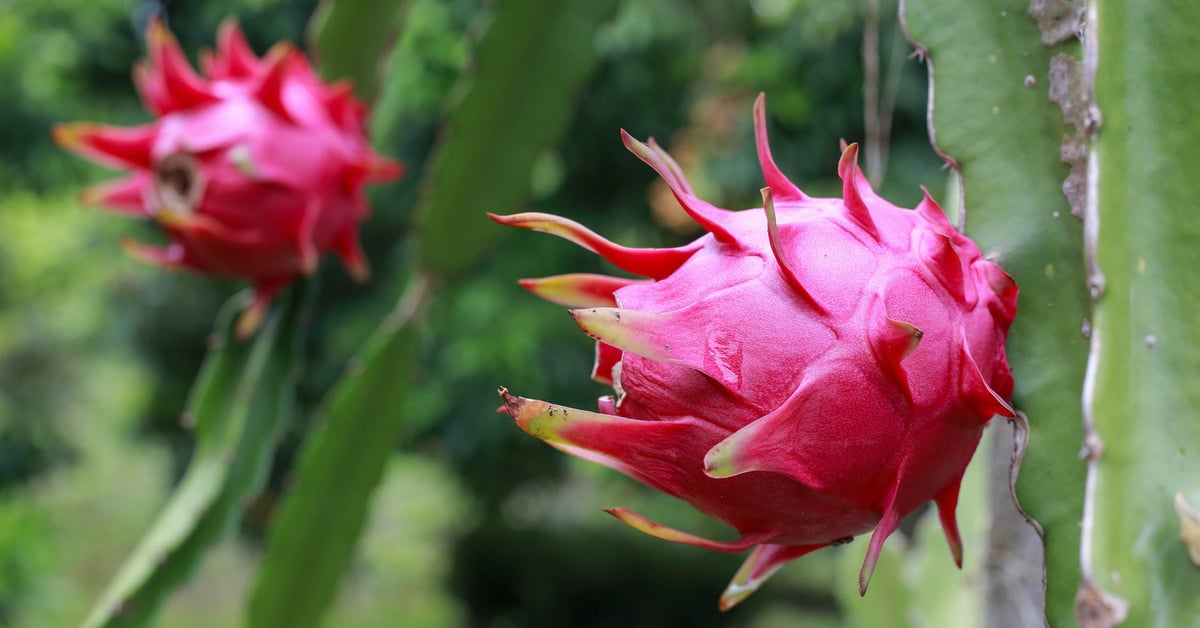


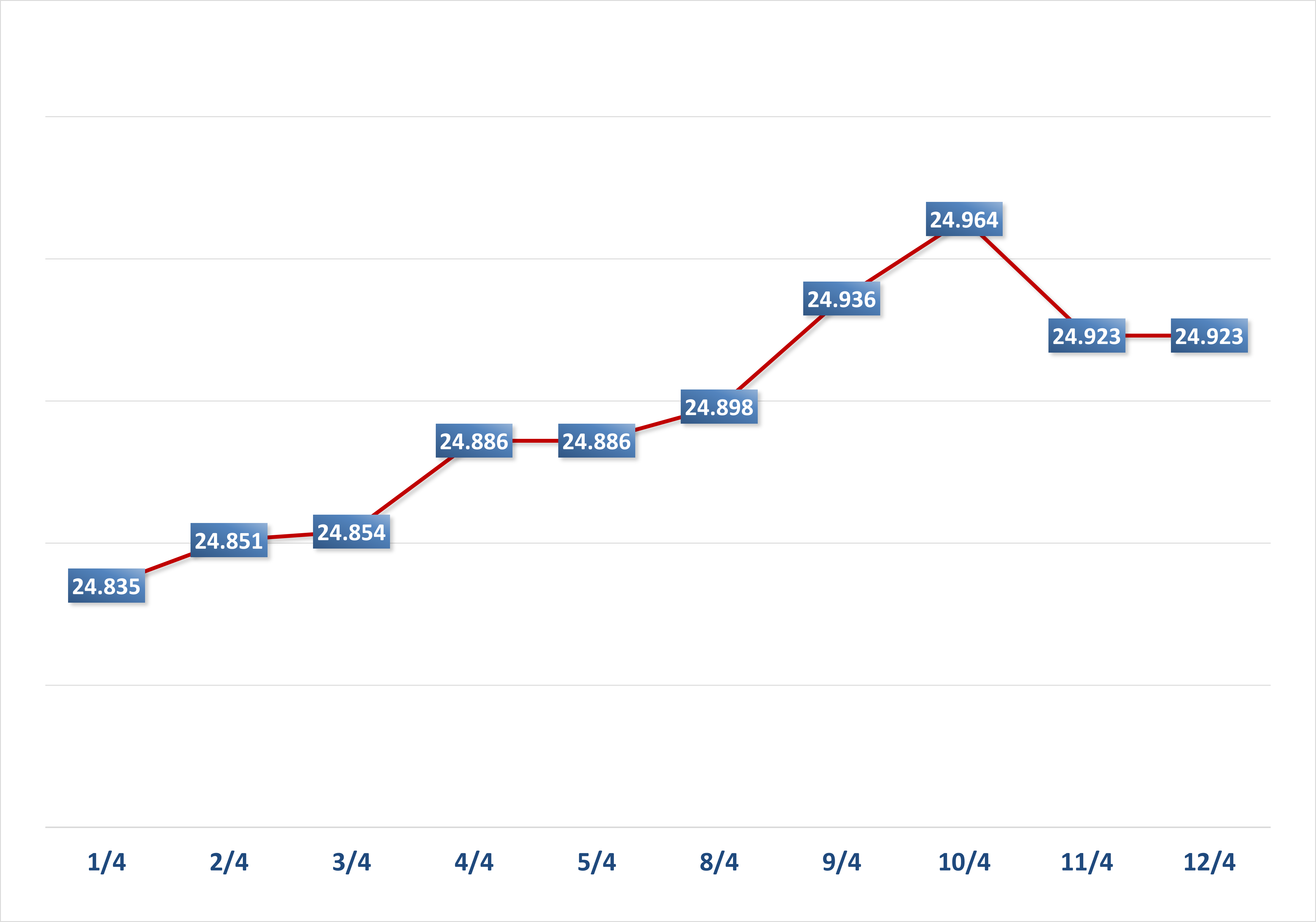

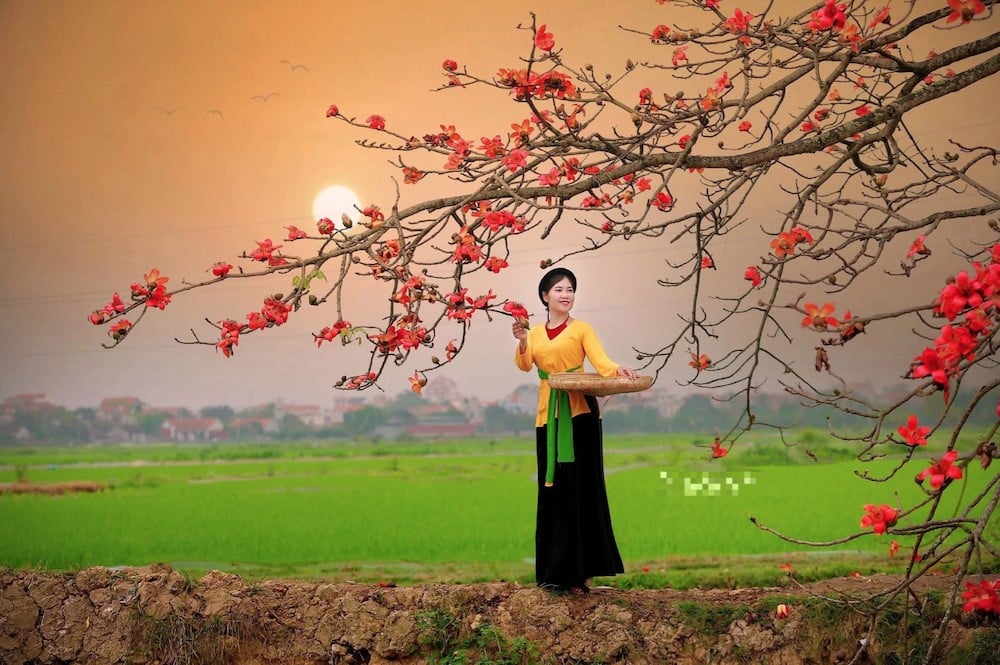
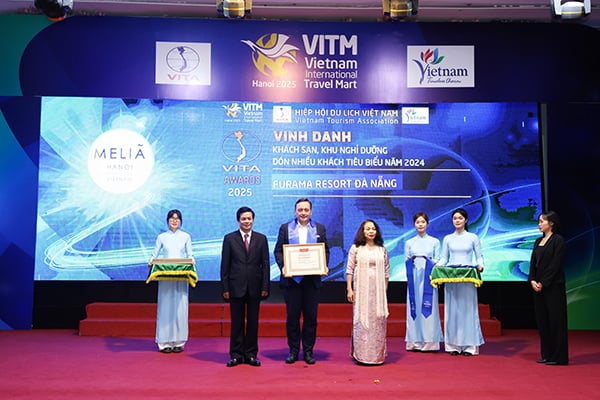




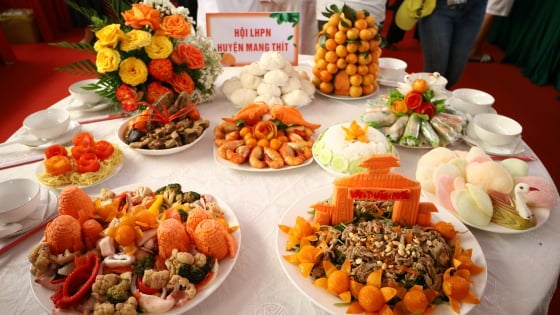

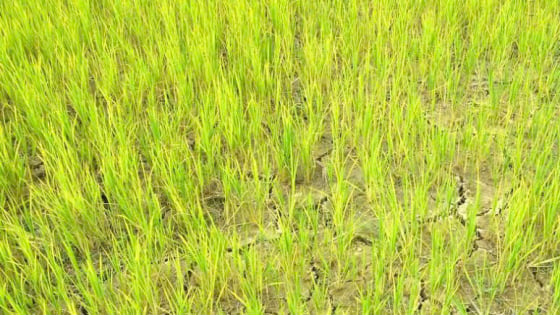

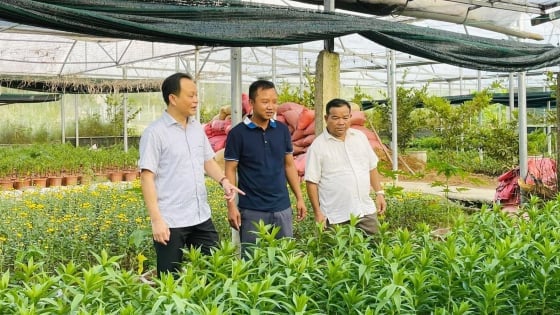
















































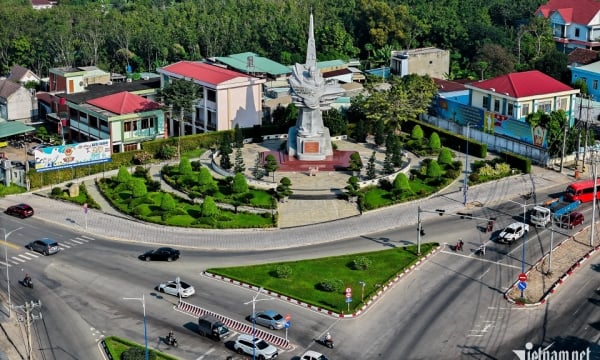


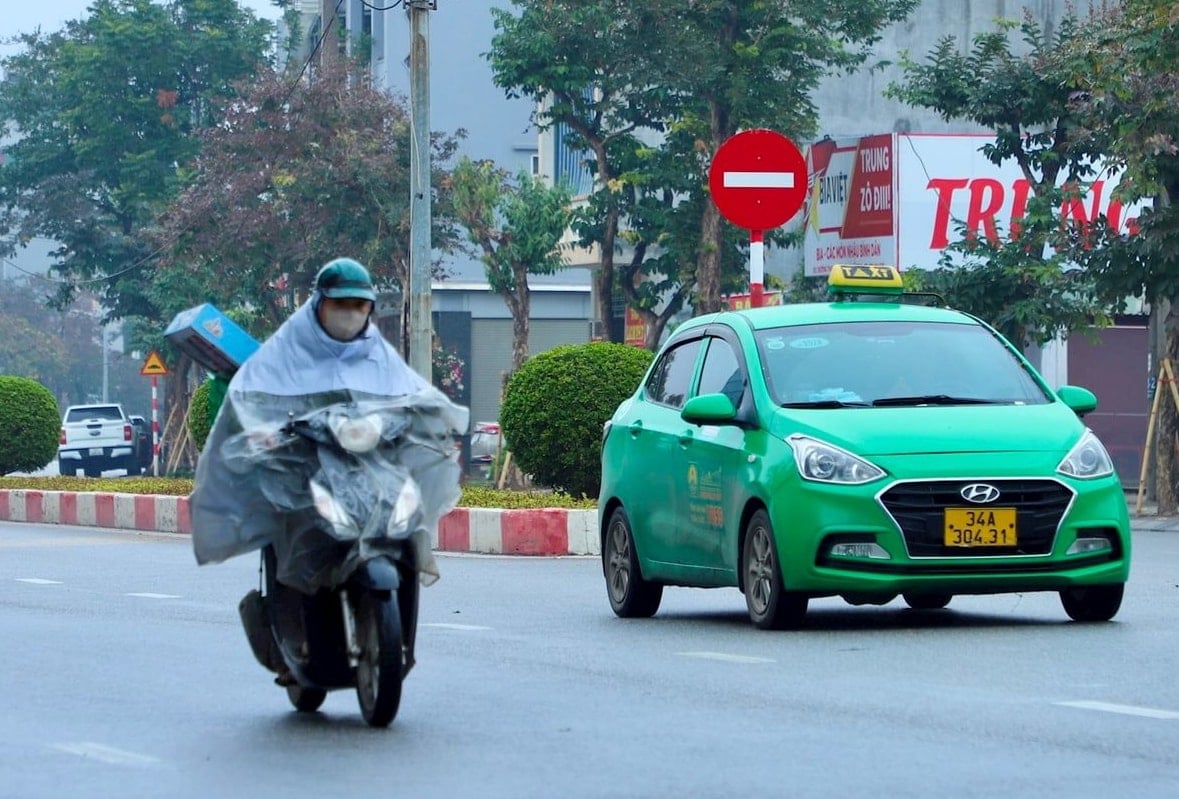












Comment (0)